Top 10 Largest Coffee Producing Countries In The World
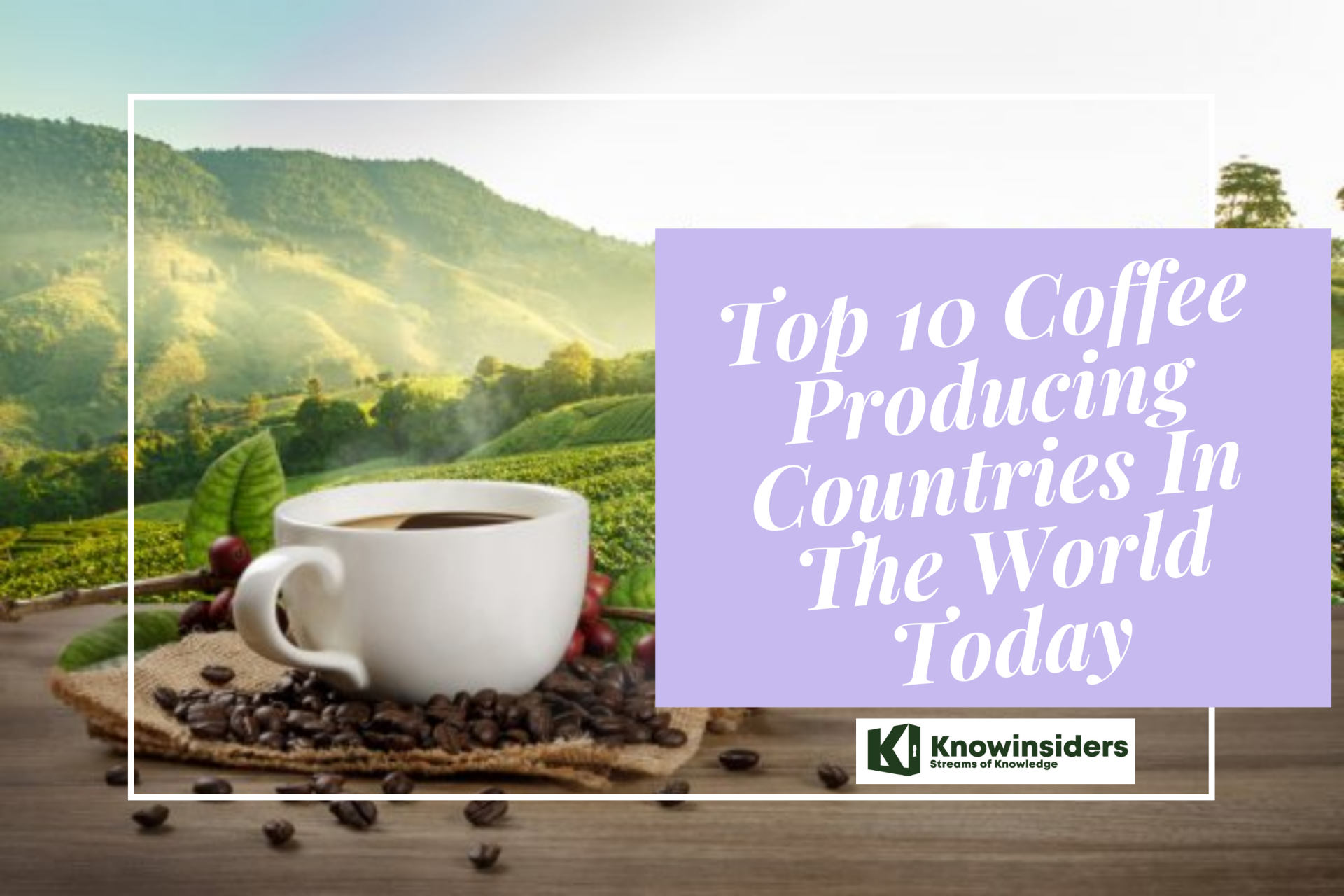 |
| Coffee Producing Countries. Photo: KnowInsiders |
| Table Content |
With a café at every corner in many cities around the globe, it comes as no surprise that coffee is one of the top commodities worldwide. As the third most consumed beverage in the world, after water and tea, coffee beans are in high demand everywhere. The top producing nations each produce millions of kilograms of coffee beans that find their way into the hands of eager consumers.
Second only to oil, coffee is the world's second most traded commodity, with about half a trillion cups consumed per year. Coffee beans are not only used for brewing a cup of coffee, but (through decaffeination) also provide caffeine for beverages (cola), pharmaceuticals, and cosmetics. There are two main commercially grown types of coffee beans: Arabica, which accounts for 70% of the world's coffee, and the Robusta which is far cheaper and easier to grow.
The List of 10 Largest Coffee Producing Countries In The World Today
10. Guatemala
9. Uganda
8. India
7. Peru
6. Honduras
5. Ethiopia
4. Indonesia
3. Colombia
2. Vietnam
1. Brazil
***
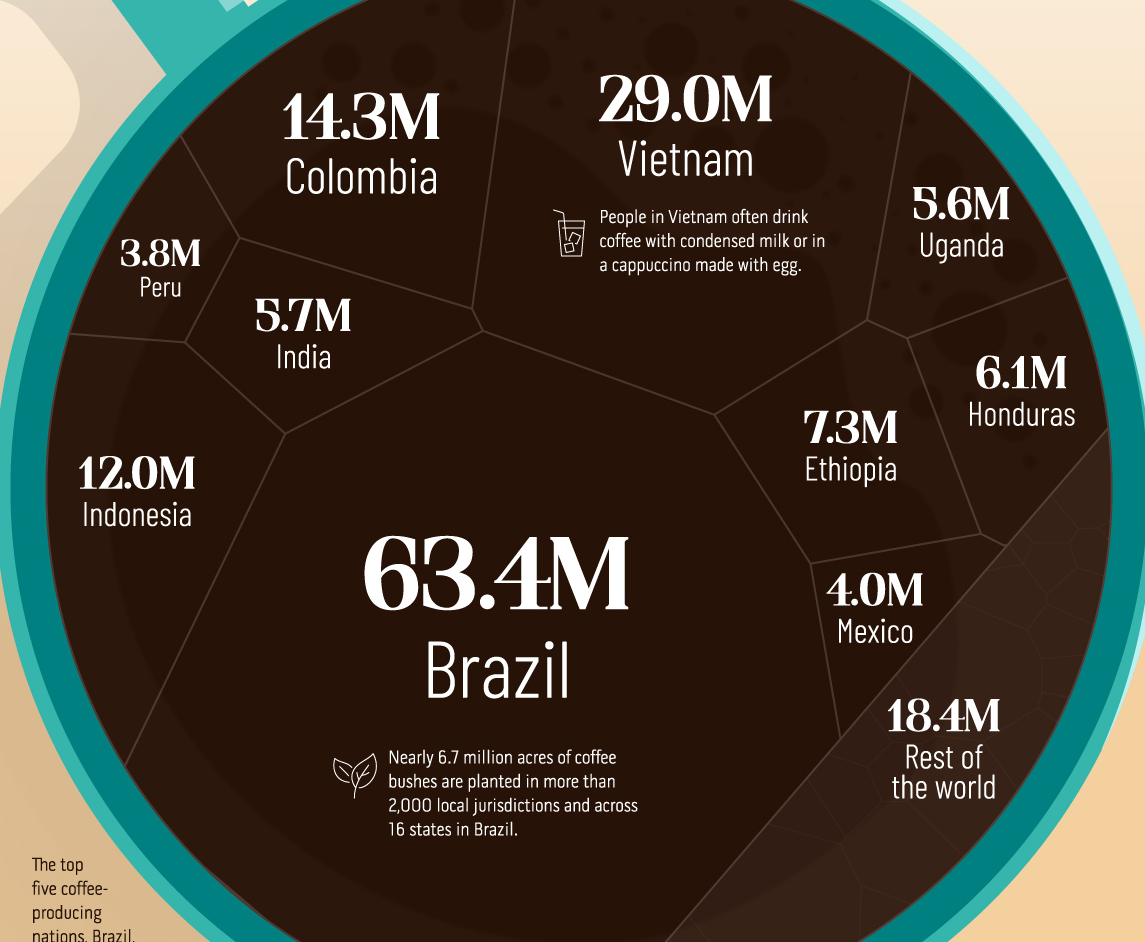 |
| Largest Coffee Countries In The World |
Which Are the 10 Coffee Largest Producing Countries In The World?
10. Guatemala
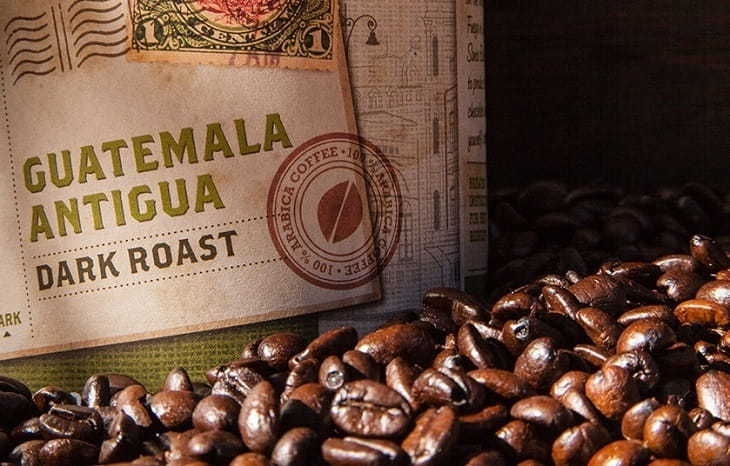 |
| Photo: CoffeeGearX |
Located in Central America, it is surprising that Guatemala is another worldwide coffee producer. Ranking tenth in the globe, it produces coffee up to 225,000 metric tons. Moreover, with the perfect climates and soil, Guatemala’s coffee is well-known for both quality and taste.
Its coffee is mainly grown in the southern part of the country from east to west, requiring rich volcanic soil, low humidity with sufficient sunlight, and cool nights. Therefore, its main growing regions are Antigua, Acatenango, Atitlán, Cobán, Huehuetenango, Fraijanes, San Marcos and Nuevo Orientea. Of course, coffee-growing from different areas delivers different flavors as well. For example, coffee from Huehuetenango has a crisp acidity and caramel-like sweetness.
However, having a look at the history of coffee production in Guatemala, we can see that it started growing in the 1850s where its two main exports collapsed due to the invention of chemical dyes. From that onward, the country government started to put more focus on coffee production by creating the coffee trade and providing tax benefits to the producer. Furthermore, to promote its coffee production to go global, the government has established a marketing association called Anacafé to promote the country’s coffee.
Guatemala’s coffee, subsequently, has been the country’s largest export crop and is on the list of the world’s top 10 coffee-growing countries. In addition, gaining a global reputation for the premium coffee quality, it offers various arabica like Caturra, red and yellow Catuai, red and yellow bourbon.
9. Uganda
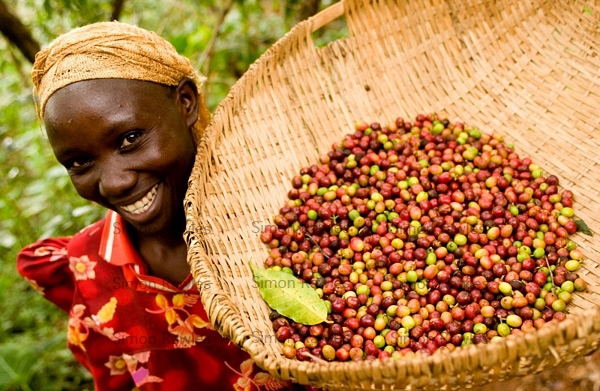 |
| Photo: Visty |
Heading off to Africa we encounter Uganda entering the charts at number ten.
Uganda is mainly known for its robusta coffee. Cultivated for generations, the coffee beans are found indigenously deep within the rain forests. They’re thought to be among the rarest naturally occurring coffee trees anywhere.
The main Robusta growing areas are in the western Nile, Okoro region, northern regions of Lira and Gulu, the eastern regions of Mbale and Bugisu the central and southwestern regions of Jinja, Mukono, Kampala and Masaka as well as the western regions of Kasese and Mbarara.
In recent years its making a name for its speciality Arabica. Ugandan Robusta is a step above most other forms of the bean, and they tend to have a wine like acidity, with rich notes of chocolate producing a decent brew.
8. India
 |
| Photo: Ledger Insights |
Among the top 10 coffee-producing countries on our list, India is the eighth largest producer with coffee production of 319,000 metric tons. India coffee cultivation started to grow in the 1950s where 30% of crops are arabicas and the remaining 70% are robusta beans.
Besides, to improve the quality of the coffee as well as to promote its product to the globe, Indian government created an association under the name “The Indian Coffee Board” in 1907. Throughout its modern history, it has successfully regulated its coffee sector.
Meanwhile, since coffee is not widely consumed domestically, 80% of the productions are grown for export purposes to Europe and Russia. However, not all areas in India are suitable to grow coffee. 210,000 coffee producers spread their coffee farms in Tamil Nadu, Travancore, Kerala, Nilgiri, Karnataka state, and some other states.
On the other hand, since those small farms also grow spicy, it leads to the spicy flavor of the coffee with cardamom and has low acidity. Unlike the other coffee-producing countries using either dry or wet-process methods, both 2 coffee processing methods are fairly popular in India. Furthermore, to protect and ensure that its coffee sector is running smoothly, the government has created the India Coffee Board to regulate and monitor the whole industry.
 Top 7 Most Popular Coffee Brands in the World Today Top 7 Most Popular Coffee Brands in the World Today Coffee is one of the most consumed beverages across the world. In fact, the world is divided into two parts – The coffee-drinking people and ... |
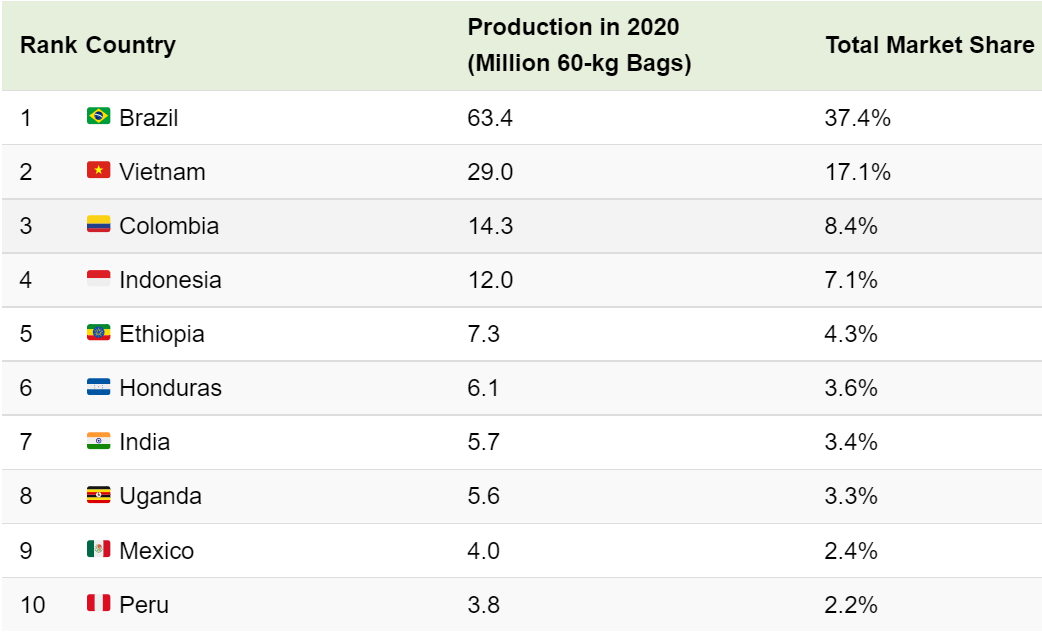 |
| The list of the top 10 largest coffee-producing nations in the world |
7. Peru
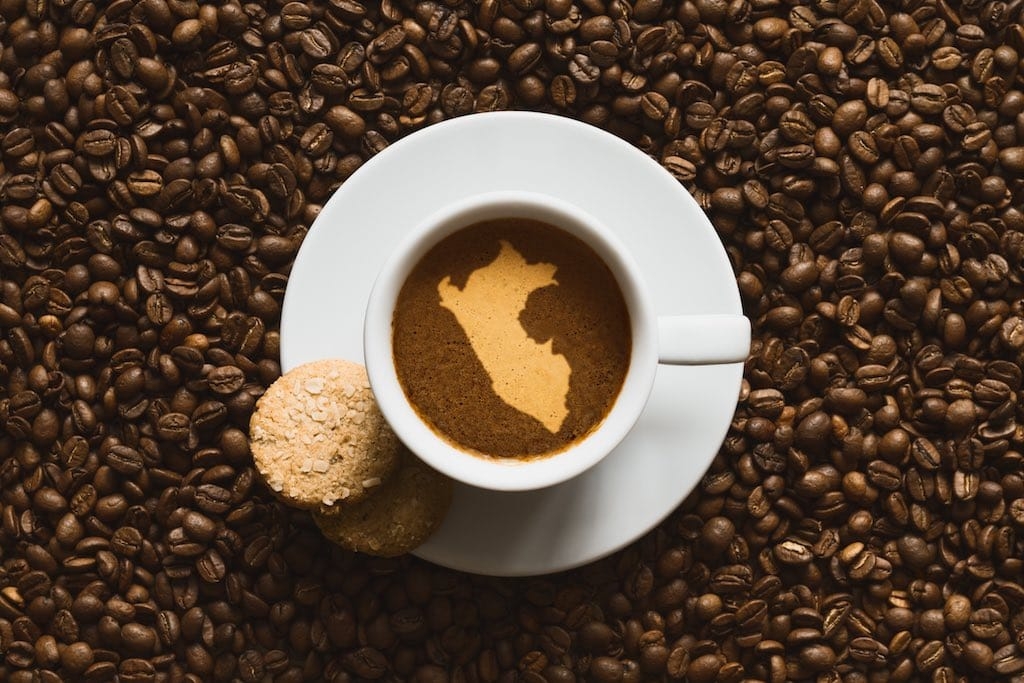 |
| Photo: Eat Peru |
Hopping over to Peru, coffee is grown across 10 specific regions in the north, central belt and south of the country.
It’s certainly not a new crop either having been grown across the country since the 1700s. Coffee was often totally overlooked due to the nation’s poor business infrastructure, which meant most of the coffee produced was consumed domestically. This has changed in recent decades with farmers having the opportunity to export and hit world markets with their produce.
Many are discovering these coffees rival some of the best from around the globe. Peru coffee grown in the lowlands tend to be medium bodied with nutty floral and fruity notes, those grown in the highlands, specifically in the Andes are floral, rich and acidic and are just waiting to be discovered.
6. Honduras
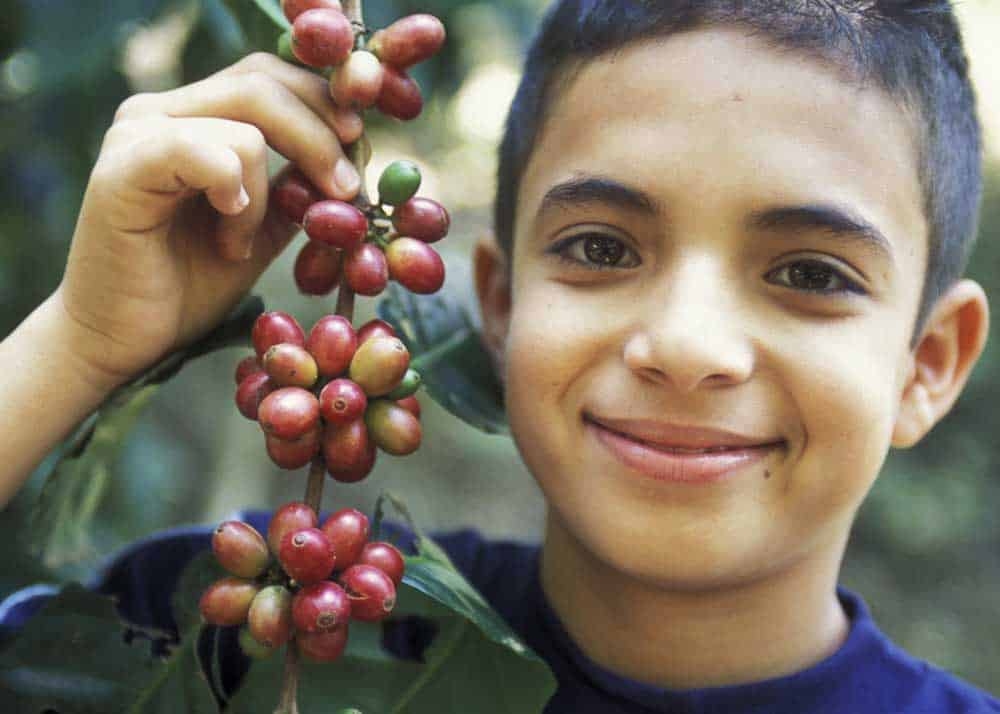 |
| Photo: EnjoyJava |
Back off to Central America, we find Honduras nudging ahead of Ethiopia at number five, taking the biscuit by 3,795 additional metric tons.
Honduras boasts similar climate conditions to Costa Rica and Guatemala, however its current position in global coffee exporters is astonishing as until relatively recently it was largely overlooked.
It was hindered in the past by poor infrastructure leading to most of their coffee being sold domestically with only 10% of their crop being exported. However in recent years their coffees are increasingly sought after.
Most Honduran coffees are grown on small mountain farms known as ‘Fincas’ at high altitudes of between 1400-1700 metres. Many of these ‘Fincas’ have their own micro-climate, which provides a huge range of flavour profiles and aromas from hazelnut, right through to vanilla with hints of red fruit.
5. Ethiopia
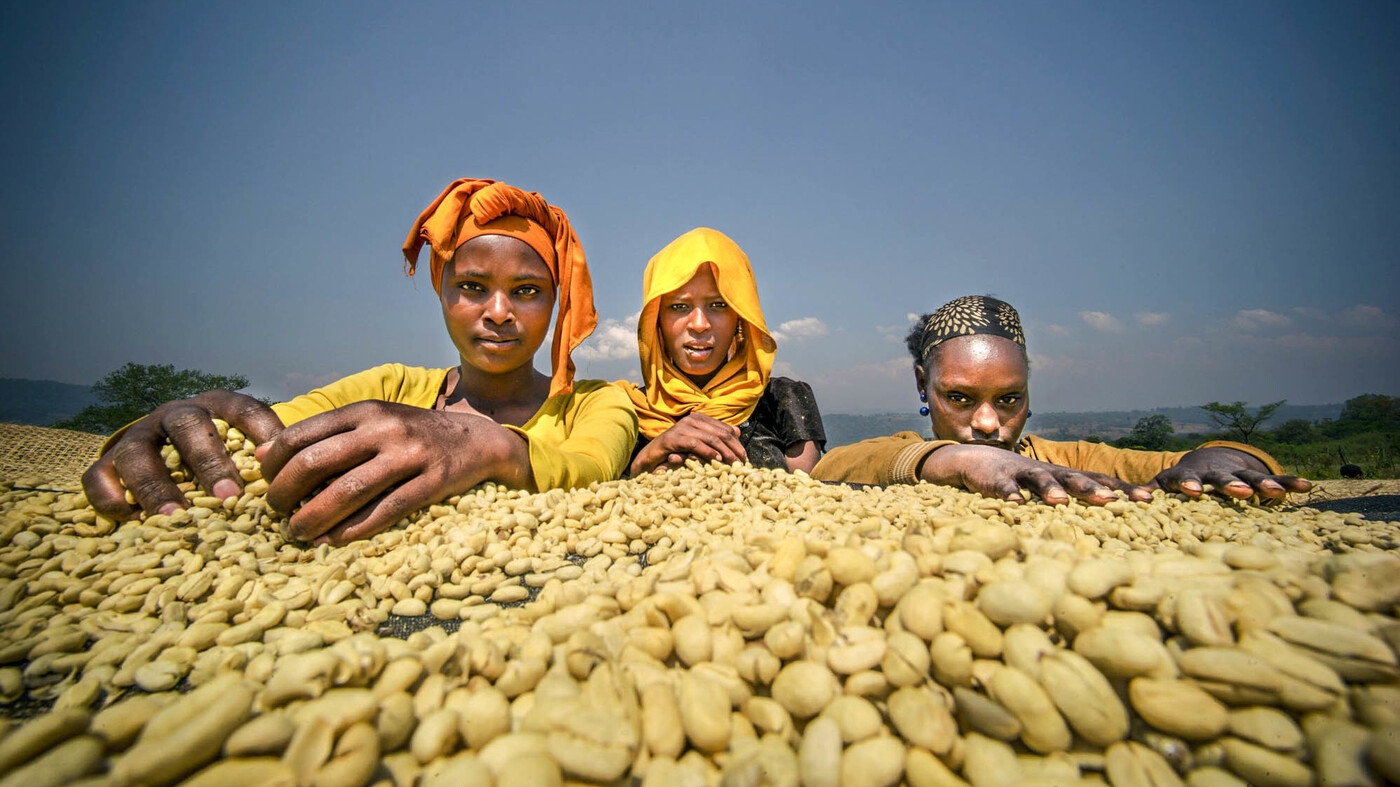 |
| Photo: NPR |
Having the ability to produce 482,000 metric tons per year and the coffee cultivation of 4,000 square km, Ethiopia is another top coffee producing country, ranked 5th as the world’s largest coffee producer in the globe and has been known as the origin of arabica coffee. Consequently, coffee makes up 28% of the country’s total export with 12 million citizens living off this sector.
Meanwhile, the main growing regions are the southwest, west, and east part of Ethiopia. Also, as the origin of arabica coffee, Ethiopia has had many experiences in producing the coffee for more than 110 decades. Therefore, the Ethiopian coffee trademark like Yitgacheffee is valued worldwide for its floral notes and pleasant acidity.
On the other hand, talking about the quality and quantity, there are a variety of coffee beans produced in this country with their own uniqueness. The flavor and the aroma of the coffee are results from different processing methods. The dry method offers a chocolatey and fruity drink. Whereas the coffee beans with the use of the wet-processed method tend to be lighter and have strong acidity.
4. Indonesia
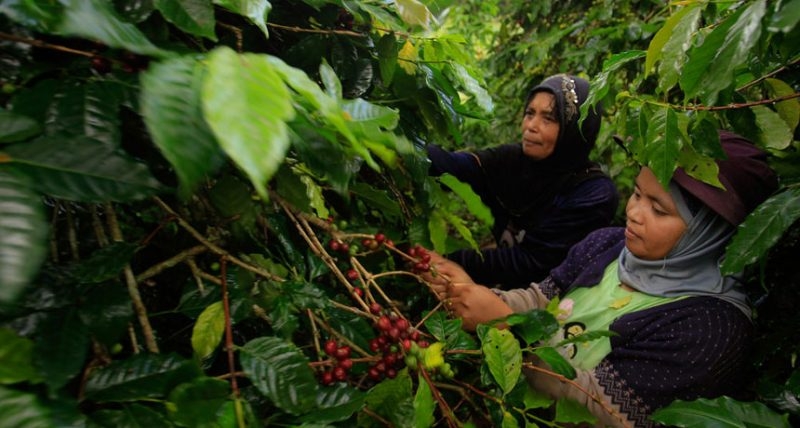 |
| Photo: Science News for Students |
Again back to Asia, Indonesia hits the heady heights at number four. Indonesian coffee boasts are being prized for their unique, unmistakable flavors, velvety mouthfeel, and earthy tones.
Indonesia is nestled between the Oceans, mountainous, volcanic islands such as Bali, Lesser Sunda, Flores, Java, Papua, Sulawesi, Sumatra. The ocean mist, volcanic soil, soaring heights, and natural old-growth forests make Indonesia ideal for growing coffee.
History says that Arabica coffee was first brought from Yemen to the Indonesian island of Java in the late 1600s by Dutch settlers.
Indonesian coffee has different flavors of Balinese coffee, Javanese coffee, Papua coffee, Sumatran coffee beans with uniquely sweet chocolate, floral, and earth notes.
Indonesian Balinese coffee is complex, having low acidity and strong woody tones that rise beneath delicately spiced citrus tones, with a weighty, silky body.
Indonesian Javanese coffee is rich, full-bodied coffee with dark chocolate undertones and spicy chili overtones with a molasses-like texture and slightly more acidic than other Indonesian coffees.
Indonesian Papua coffee has a silky and a syrupy mouthfeel taste with a rich chocolate base and sweet spiced-maple upper notes.
Indonesian Sulawesi coffee has a smooth and earthy taste with deep, gentle spice and sweet nut tones that close with a bright finish.
Indonesian Sumatran coffee is uniquely intense. Because it has low acidity and deep almost bitter, chocolate, chili, sweet fruit, cedar, tobacco, and earth notes with a thick, creamy texture.
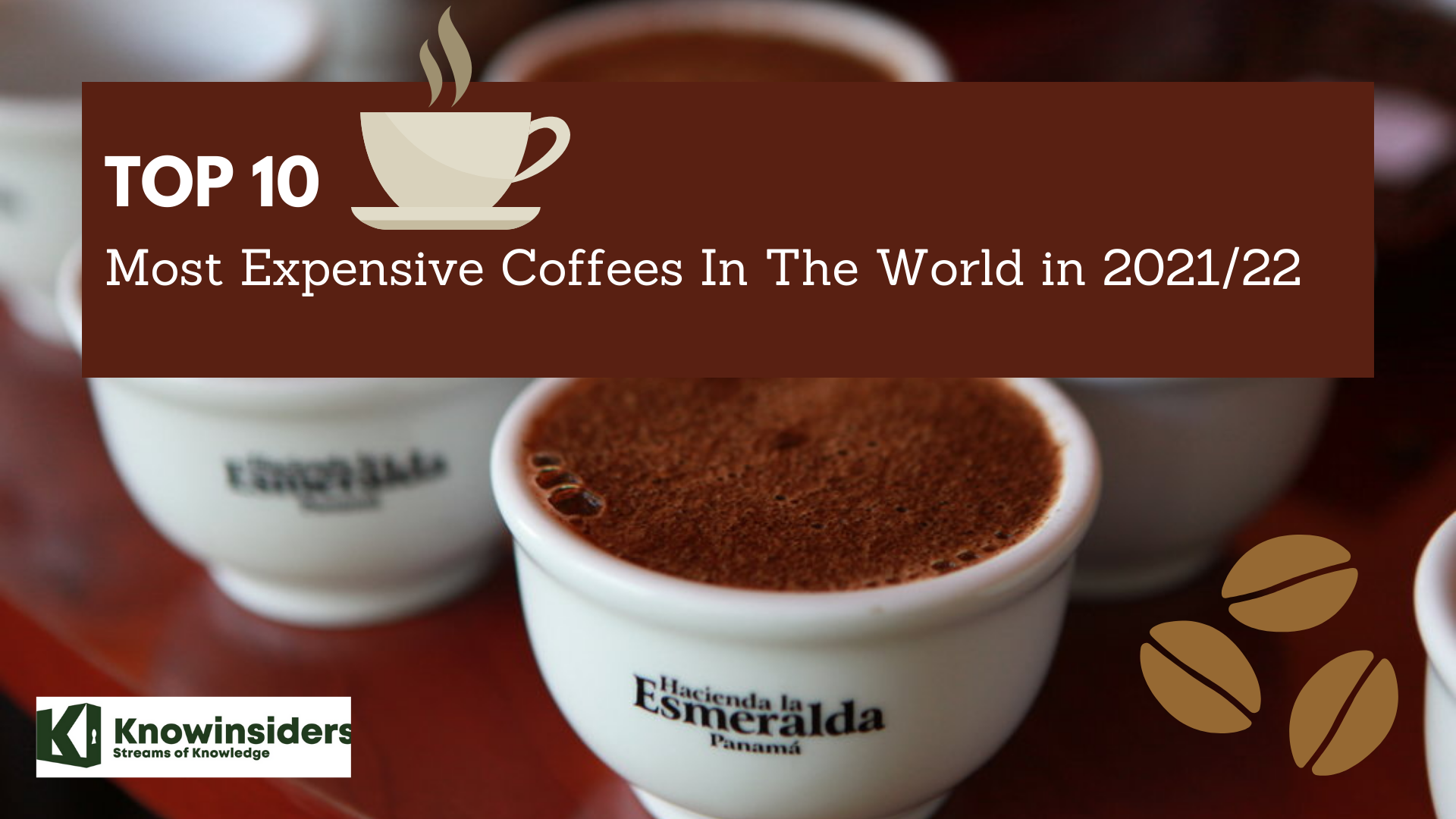 Top 10 Most Expensive Coffee In The World for 2021/2022 Top 10 Most Expensive Coffee In The World for 2021/2022 Coffee is a familiar and daily drink in many parts in the world, but sometimes it can be considered a luxury. Keep reading to know ... |
3. Colombia
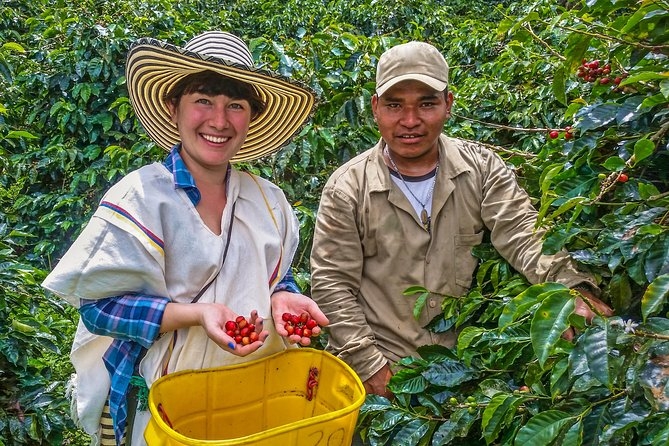 |
| Photo: Viator |
Skipping back South America, we encounter Colombia upping the ante still further at number three. With its perfect terrain and climate, Colombia is one of the few countries that produce 100% Arabica beans.
Colombia and coffee is a very famous combination which is prized for aromatic, mild and fruity flavours. Café de Colombia is a non-profit organisation, represents the coffee trade and touches every family in Colombia. It re-invests their profits to the benefit of coffee growing communities.
The beans are typically grown at 1500-2000 metres, which produces a range of medium bodied coffees with rich nutty aromas and a hint of citrus acidity, delivering a mild flavour and subtle sweetness.
2. Vietnam
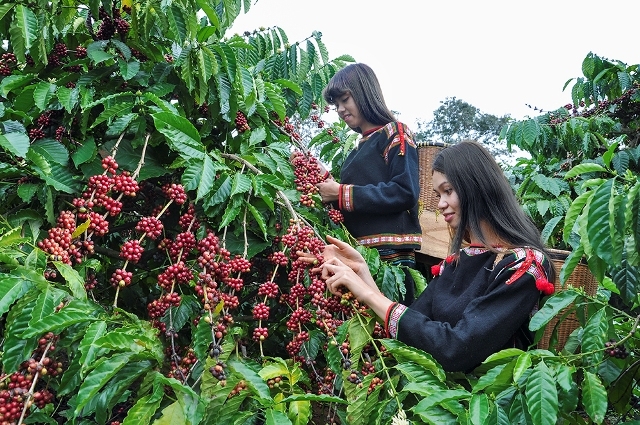 |
| Photo: Báo điện tử - Đảng Cộng sản Việt Nam |
You might be surprised that Vietnam ranks the second-largest coffee-producing country producing around 1,600,000 metric tons of coffee annually, among which 95% contains robusta beans and the remaining 5% are arabica beans. Vietnam made up this partition because they aim to produce instant coffee in a large amount. However, although it started growing coffee beans in the 1800s, it was only until the 1990s that this country decided to use coffee beans as the export commodity to boost the country’s economy.
On the other hand, Vietnam has been known as one of the cheapest robusta bean producers while delivering more caffeine than the arabica beans. Thus, Vietnamese coffee tends to be bitter and has less acidity as well. Moreover, since they put more focus on producing robusta, it accounts for 40% of the world’s robusta beans and ranks the top 1 producer of robusta coffee in the world.
Furthermore, despite being the second-largest producer, Vietnam usually makes the coffee with the condensed milk and brews one of the tasty cappuccinos with the use of raw egg. Thus, its cappuccino is worth a try if you have the opportunity.
1. Brazil
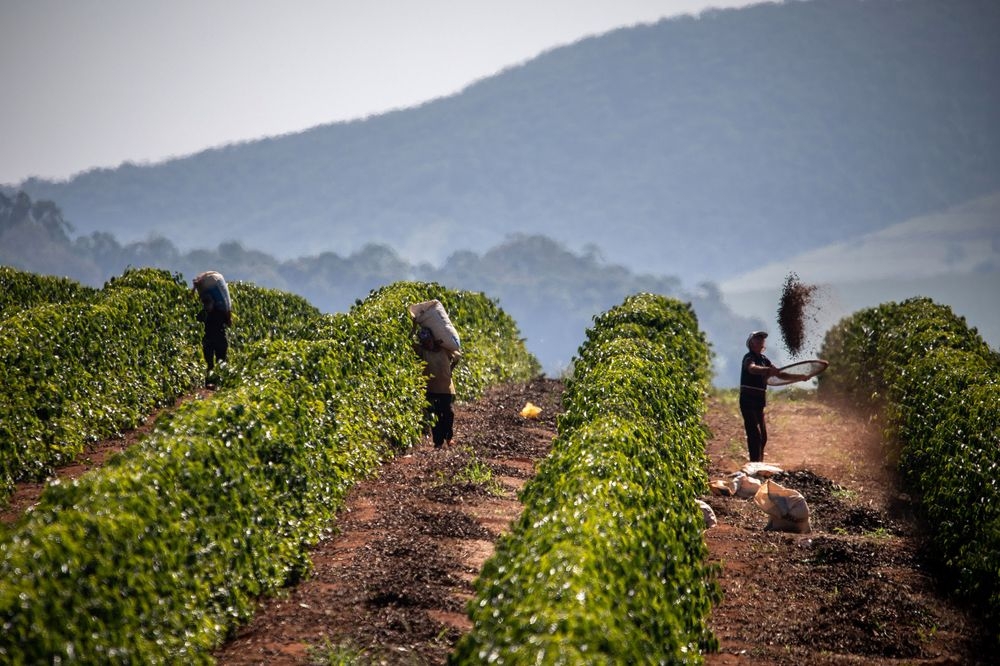 |
| Photo: 43 Factory Coffee Roaster |
Let’s head back to the last but most crucial coffee-producing country Brazil, which has all qualities to hit at the end of our journey. So it made the top slot again by producing a staggering quantity of 3,019,051 tons of coffee in 2020 and 2021, which is equal to 40-60 million bags. It is Brazil’s yearly coffee production, and it is one-third of the world’s coffee production.
So Brazil is the world’s leading grower and exporter of coffee beans. It is supplying about 60 percent of the world’s coffee and has been dominating the world since the 1840s, i.e., for 180 years. It proves that the climate of Brazil is perfect for growing Arabica and Robusta beans.
The proper levels of sunlight and rainfall, low elevation, and even temperatures all year round make Brazil the most favorite country for coffee cultivation.
The most common types of coffee in Brazil are Bourbon, Typica, Katorra, Katao, Akiya, Mando Novo, and Acato. The best coffee in Brazil has relatively low acidity. It exhibits a sweet taste, often with a chocolate roast flavor with a bittersweetness.
The creamy body, low acidity, subtle bittersweet, rich chocolate, and caramel notes of the Brazilian coffee are the main features and perfect base for its great flavor. And they are also the key reason for its fame worldwide.
Countries that produce coffeeCoffee is actually the world’s second most traded commodity. In fact, only oil is more traded than coffee. You’ll find that the countries that produce coffee have something in common. They’re all located in the Tropics. That’s the belt running between the tropics of cancer and Capricorn. But it’s a little difficult to get your head around where your daily dose of coffee might have come from when you buy from your local specialty coffee shop or for that matter make an online bean purchase or two… time to delve into things and go on an international journey of coffee discovery as we explore the top coffee producing countries in South America, Asia and Africa. |
 Top 10 Most Expensive Coffee In The World for 2021/2022 Top 10 Most Expensive Coffee In The World for 2021/2022 Coffee is a familiar and daily drink in many parts in the world, but sometimes it can be considered a luxury. Keep reading to know ... |
 Top 9 Famous Coffee Brands In the World Top 9 Famous Coffee Brands In the World Coffee is a famous drink that is rich with caffeine and produced from the plant seeds of the tropical tree. |
 Top 7 Most Popular Coffee Brands in the World Today Top 7 Most Popular Coffee Brands in the World Today Coffee is one of the most consumed beverages across the world. In fact, the world is divided into two parts – The coffee-drinking people and ... |























